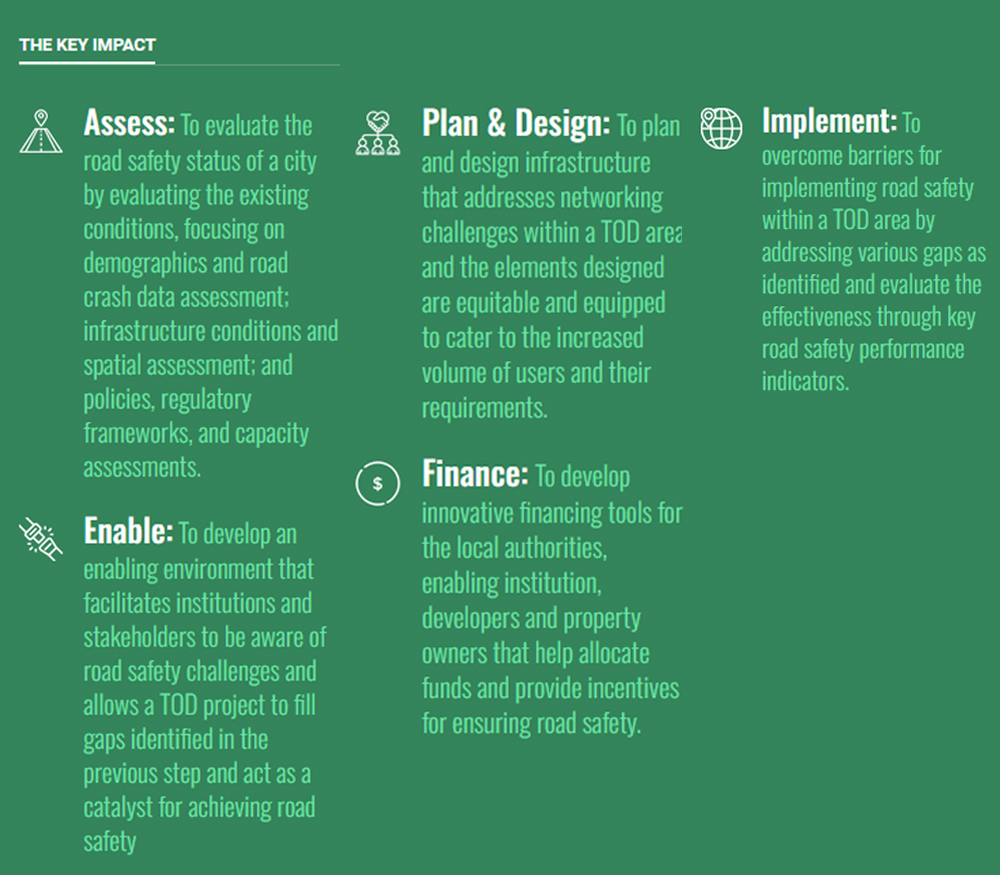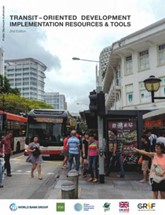Integration of Road Safety Considerations in Transit-Oriented Development
May 31, 2022
An efficiently planned Transit-Oriented Development (TOD) ensures seamless integration of public transport with different modes of transportation that are accessible, safe, less cumbersome, and comfortable; with the highest priority being given to pedestrians followed by people on cycles, and the least to private vehicles. Following that priority order, a TOD project integrates best practices of land use planning, transportation planning and urban design and is supported by innovative financing models of public private partnerships and infrastructure development to create livable communities.


TOD can be designed at multiple scales of site, station area, corridor, and city or regional levels and help limit the spread of urban sprawl. It increases access to jobs and services, and reduced demand on private vehicles help decrease congestion and improve air quality.
Ideas in action
How do cities support a safe TOD and become ready for implementing it? Below are three steps for assessing and enabling road safety in TOD:
- Planning a TOD project starts with assessing the existing conditions of the place – demographic data including socio-economic conditions, urban characteristics, transportation system and network, travel and overall road crash data, job opportunities and economic growth, etc. This allows informed planning and design decisions placing safety considerations within the development and the city at large.
- Road safety considerations need to be specifically addressed in TOD projects. Accordingly, a detailed road crash data analysis becomes critical in identifying road safety related challenges in the area in question. This analysis helps to determine the priorities of the intended TOD project and develop an approach to address road safety aspects in that specific location. Road crash data needs to be analyzed along with social, physical infrastructure, and institutional assessment data:
- The juxtaposition with social assessment helps ascertain if the impact is felt disproportionately by certain demographics – racial and/or religious minorities, women, children, senior citizens, or in low-income neighborhoods of a city.
- When analyzed along with physical infrastructure assessment, the crash data assessment can determine conditions that could have led to the crash or were factors in causing a crash.
- Institutional assessment helps in understanding how existing institutions, policies, and regulations impact road safety and support the execution of a TOD project.
-
Institutional gaps that are identified through the assessment processes need to be addressed to create an enabling environment that supports creation of a safe TOD. This can be achieved through the following:
-
Develop the organizational setup and capacity of the TOD implementing agency in executing a safe TOD project.
-
Adjust street design guidelines to reflect a different approach to sharing street space among users, beyond a single TOD project.
-
Engage Stakeholders. Innovative engagement strategies have been developed through the years depending on the type of engagement.
-

Key resources to drive action
The updated TOD Toolkit, developed with funding support from UK Aid through GRSF, incorporates these recent updates related to road safety.
The webinar series “Integration of Road Safety Considerations in TOD Projects” described how to systematically integrate road safety in planning, designing, implementing, and financing of TOD programs, and was built on the new World Bank/WRI India note called Good Practice Note: Integration of Road Safety Considerations in Transit-Oriented Development projects.

